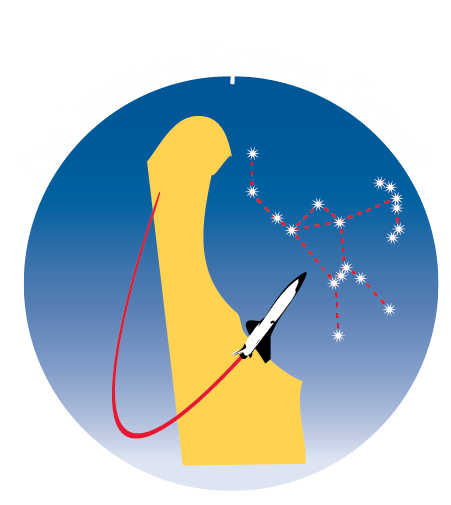
Summer Researcher with Dr. Kurt Norder
Neuroscience, Organizational and Community Leadership
University of Delaware
Stephanie Sullivan is a senior Neuroscience major in the Honors College at the University of Delaware. Following her personal mission statement of “finding order in disorder,” she seeks to transform complex situations into simple scenarios. Stephanie intends to pursue a career in consulting by translating the lessons of neuroscience to real-world business situations.
Stephanie’s Research Summary:
Teamwork is an essential ingredient for driving productivity and organizational success. This is particularly apparent in agencies like NASA, where teamwork forms the core of their achievements. The rise of hybrid work with non-geo-based teams has radically transformed traditional workplace dynamics, opening up fresh avenues and creating new obstacles for leaders to bolster team performance (Fabritius & Hagemann, 2017). Thus, leading non-geo-based hybrid teams necessitates a deep understanding of human behavior and communication, and neuroscience offers crucial insights in this domain.
The research carried out in Spring and Summer 23 delved into the intricacies of hybrid non-geo-based team leadership within the context of our modern business and technological landscape (Alexander et al., 2021). As non-geo-based teams and the hybrid workplace continue to surge in popularity, mastering leadership in virtual environments has become critical to fuel productivity and organizational success.
To address this new challenge, I conducted a literature review of relevant research papers and models, notably the SCARF model developed by David Rock of the Neuroleadership Institute (Rock, 2007). The SCARF model is a neuroscience-based framework that examines how social and emotional factors impact behavior and interactions in the workplace. The model’s key concepts include Status, Certainty, Autonomy, Relatedness, and Fairness. The SCARF model illuminates fundamental social needs, empowering leaders and individuals to improve interactions and create positive environments.
I also conducted interviews to discuss these topics with the leaders and members of these new teams. Through these conversations, I gained insights into how leaders approach enhancing team performance, fostering trust within the team, and creating a sense of purpose in virtual settings. The insights gained offered valuable perspectives on effective remote team leadership, supplementing a holistic understanding of various leadership tactics in the realm of remote work. Finally, I used the participant observation research method to immerse myself in a hybrid team for 10 weeks. Through this, I observed how Status, Certainty, Autonomy, Relatedness, and Fairness come into play for leaders in the hybrid workplace hybrid team, and how they influence group dynamics, communication, and decision-making. Included below is a table containing a high-level summary of my observations as they relate to the SCARF model.
| Action / Event | Observation | SCARF Component |
| Cameras on during Zoom session | Participants can see each other’s faces, which can help to build trust and rapport. | Certainty Relatedness |
| ‘Team Time’ | This is dedicated bi-weekly time for team-building activities (i.e., games), which can help to boost morale and camaraderie. | Relatedness |
| Icebreakers | These activities help team members get to know each other and generate familiarity. | Status Relatedness |
| Leader remains unmuted | This shows that the leader is engaged and present | Status Certainty Relatedness |
| Zoom chat utilization | This allows participants to have those small side conversations and quick comments that are often lacking on Zoom. This also helps to increase participation and engagement. | Status Relatedness |
| Slack utilization | This allows participants to quickly communicate with each other outside of meetings, helping to build relationships and foster collaboration. | Status Relatedness Fairness |
Works Cited
Alexander, A., Cracknell, R., De Smet, A., Langstaff, M., Mysore, M., & Ravid, D. (2021, August 28). What executives are saying about the future of hybrid work. McKinsey & Company. https://www.mckinsey.com/capabilities/people-and-organizational-performance/our-insights/what-executives-are-saying-about-the-future-of-hybrid-work
Fabritius, Friederike & Hagemann, Hans W. (2017). The Leading Brain: Powerful Science-Based Strategies for Achieving Peak Performance. TarcherPerigee
SCARF: a brain-based model for collaborating with and influencing others. (2008). NeuroLeadership Journal, (1).
Researching the SCARF model has been an incredibly enriching experience for me in two distinct ways. Firstly, I was amazed by the seamless integration of neuroscience principles with workplace dynamics. My neuroscience classes at the University of Delaware have largely focused on neuroscience as a biological field, whereas the SCARF model and my experiences at a top 10 bank showed foundational neuroscience principles in action. This practical implementation illuminated the model’s potency power and deepened my comprehension of its real-world implications.
Secondly, while interning at the Bank, I observed the subtle, yet impactful behaviors exhibited by the leader of my hybrid, non-geo-based team. Armed with insights from the SCARF model, I could discern and appreciate the significance of these actions in the larger context of team cohesiveness, collaboration efforts, and overall unity. These observations have solidified my belief in the untapped potential of neuroscience within the business realm. The ability to decipher cognitive processes not only enhances self-awareness but also empowers us to foster stronger teams.

